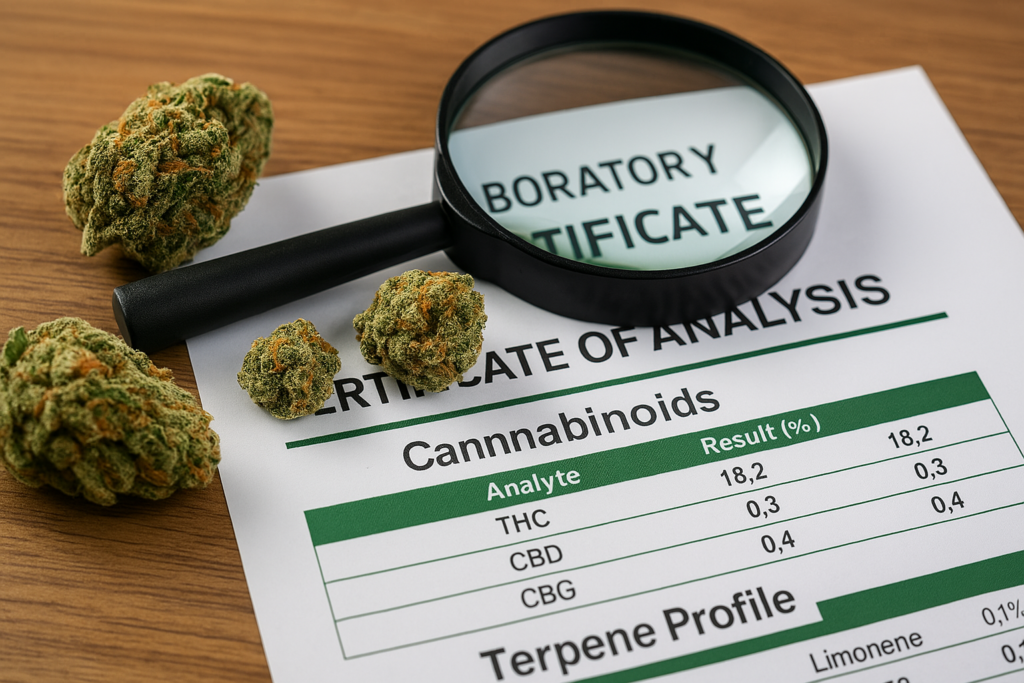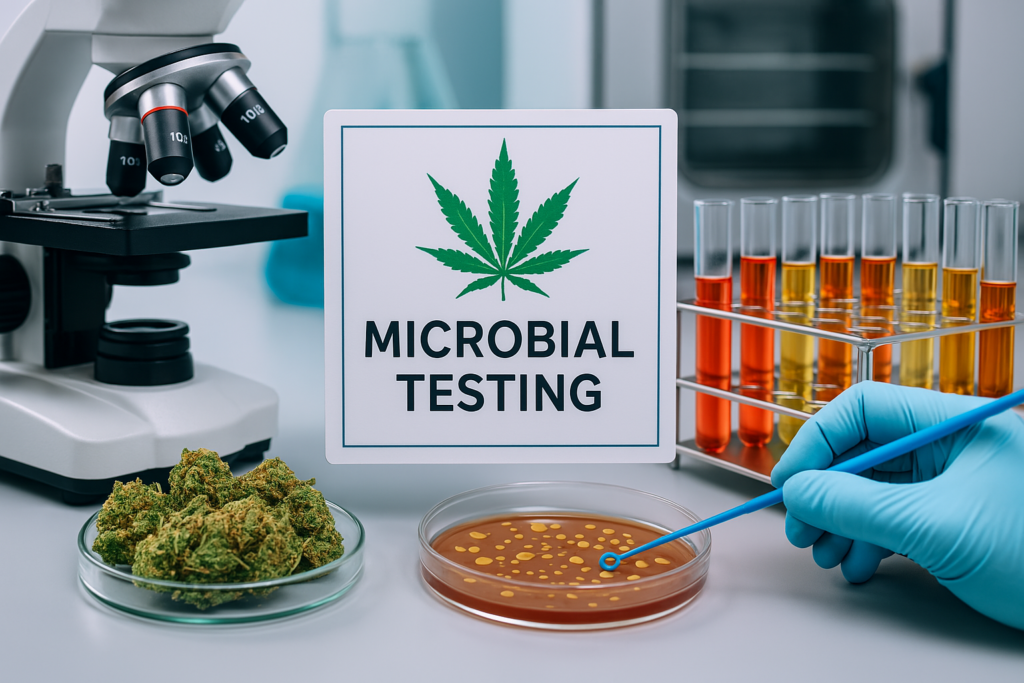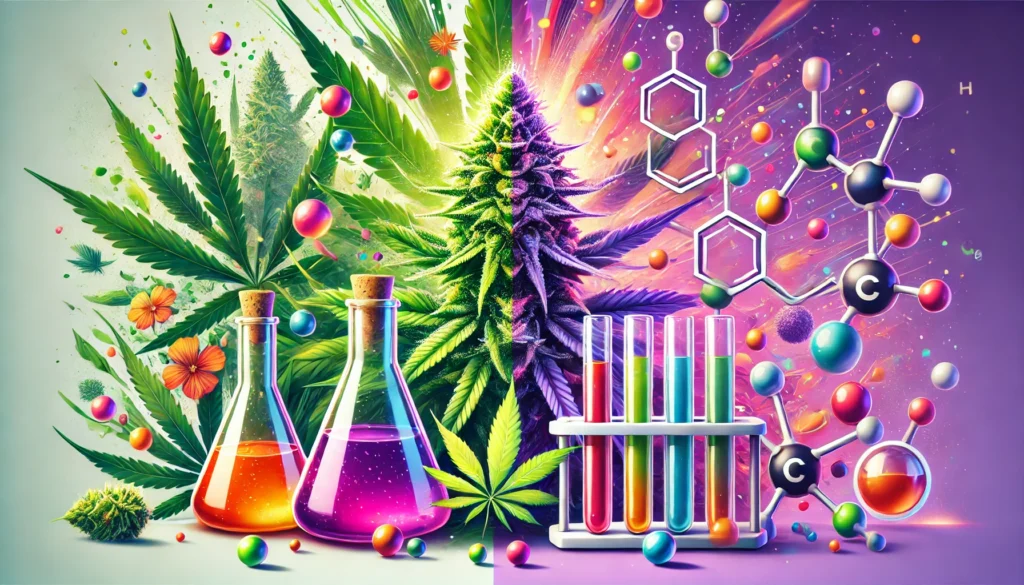How to Read a Cannabis COA Like a Boss
If you’re in the cannabis industry and still pretending to understand lab reports—this one’s for you. A Certificate of Analysis (COA) might look like a science exam, but it’s actually your best friend in quality control, safety, and buyer trust. Whether you’re sourcing, selling, or exporting cannabis, knowing how to read a COA can save you from bad deals and compliance nightmares. And if you’re buying from Colombia, good news: many producers are already delivering clear, accurate, and transparent COAs that meet international standards. Let’s break it down—no lab coat required.
Cannabinoids, Terpenes, and Why They

Matter
(Because buyers don’t just want pretty flowers—they want results, consistency, and a COA that tells the full story)
If you’ve ever looked at a Certificate of Analysis (COA) and felt like you were reading alien code, you’re not alone. But here’s the truth: if you’re buying or selling cannabis—especially in international B2B markets—you need to understand cannabinoids and terpenes like a pro.
These little chemical compounds are what make cannabis work. They determine how it feels, what it treats, and how it performs. And if you’re buying from a serious producer—especially one in Colombia, where standards are rising fast—you’ll get a COA packed with this valuable information.
So let’s make it easy. No science degree needed. Just clear, simple explanations of the good stuff inside the green stuff.
1. Cannabinoids: The Main Characters in Your Cannabis Story
Think of cannabinoids as the lead actors in the cannabis movie. Everyone’s heard of THC and CBD—but there are many more cannabinoids that play supporting roles.
🌿 THC (tetrahydrocannabinol) is the star that gets all the attention—it’s the one that gets you high. But in medical markets, buyers want to know how much is there and whether it’s consistent across batches. Too much? Patients might feel dizzy. Too little? The effect might fall flat.
🌿 CBD (cannabidiol) doesn’t cause a high but is valued for anti-inflammatory and calming effects. It’s often preferred in European medical markets where THC is more restricted.
🌿 CBG, CBN, CBC… These are the supporting cast. Each has its own unique properties—some help with sleep, others with pain or inflammation.
When you read a COA, the cannabinoid section should clearly list percentages for each compound. This tells you exactly what to expect from the product, and it helps buyers choose the right flower for the right condition.
🔑 Bonus tip: Colombian suppliers are increasingly offering detailed cannabinoid profiles with batch-level consistency, helping European buyers get exactly what they need—every time.
2. Terpenes: The Secret Sauce Behind Effects and Flavor
Terpenes are often treated like the scent and flavor team, but they do so much more. These compounds influence how cannabis feels in the body, and how it might support certain symptoms.
Let’s break down a few key ones:
🍋 Limonene – Bright citrus scent, often associated with mood uplift and stress relief.
🌲 Pinene – Smells like pine trees, thought to improve focus and mental clarity.
🌿 Myrcene – Earthy, musky, very common. Linked to relaxation and sedation.
🧴 Linalool – Floral, calming, similar to lavender. Associated with anxiety and sleep support.
These aren’t just nice-to-have details—they’re crucial for buyers looking to match flower to medical needs. A high-THC strain with limonene might feel energizing, while one with myrcene could be much more relaxing—even if THC levels are the same.
✅ When a COA includes terpene profiles, it gives you insight into how the flower may behave in real use.
✅ It also helps formulators, pharmacists, and clinicians choose the right product for their patients.
🔑 And guess what? Many Colombian labs now include full terpene breakdowns as part of standard COA testing, which gives buyers a major advantage when selecting product for medical channels.
3. Why Buyers and Sellers Need to Speak “Cannabis Chemistry”
Here’s the deal: in the old days, you could sell flower with a smile and a handshake. Today? Buyers expect data. Especially in Europe, clinics and importers need to know exactly what’s in every batch—and that it matches the paperwork.
This is why cannabinoids and terpenes matter. They help:
🧠 Educate pharmacists and doctors on how the product will affect patients.
📦 Reduce surprises—buyers know what they’re getting, every time.
🔄 Ensure repeatability, which is critical for patient treatment plans.
📊 Build trust—nothing says professional like a clean COA and a well-explained profile.
So whether you’re buying, selling, exporting, or marketing—understanding the chemical makeup of your cannabis is no longer optional. It’s what separates the premium producers from the guesswork growers.
And if you’re sourcing from Colombia? You’re in luck. Producers there are already moving toward full-spectrum COAs, clean documentation, and international-grade transparency. They’re making it easier than ever for you to speak chemistry without sounding like a scientist.
Final Thoughts: Know Your Cannabinoids, Love Your Terpenes
If you want to impress buyers, meet regulatory expectations, or just build a better cannabis brand, the COA is your cheat sheet. Cannabinoids and terpenes aren’t fluff—they’re your foundation for marketing, compliance, and buyer satisfaction.
So next time you get a COA, don’t just skim the THC percentage. Read it like a boss. Understand the full picture. Ask questions.
And remember: Colombia isn’t just growing beautiful flower—it’s delivering cannabis with clarity, data, and real medical potential.
🌿 Want to learn how to read a COA or request terpene-rich flower from Colombia? Let’s connect! Drop a comment or message anytime.
What’s a Pass? What’s a Red Flag?
(Reading a cannabis COA without panicking—or getting fooled)
Opening a Certificate of Analysis (COA) can feel like opening your exam results. You’re hoping for all A’s, but a few unexpected numbers can make you sweat. The good news? You don’t need to be a scientist to understand what’s acceptable and what should make you run.
In the cannabis world, COAs are more than just formalities—they’re your insurance policy. They prove the product is safe, consistent, and legally compliant. But here’s the tricky part: not all COAs are equal, and not everything that passes looks perfect at first glance.
Let’s go through what actually counts as a pass, what’s a big red flag, and how to read a COA without getting overwhelmed by decimals and jargon.
1. Cannabinoid Content: The Sweet Spot, Not the Max
A lot of people assume that higher THC automatically means better flower—but that’s not always true, especially in medical markets.
For example, in Europe, certain countries have strict rules around maximum THC levels. If your COA says 28% THC, that might sound impressive, but it could mean extra regulatory hurdles or outright rejection.
✅ What’s a pass?
- THC and CBD percentages match what was advertised
- Slight variations (within ±10%) are usually acceptable
- Cannabinoid profile fits the intended use (e.g., high CBD for anxiety support)
🚨 Red flags:
- Missing cannabinoid data
- Wild THC/CBD swings from batch to batch
- No minor cannabinoids listed—could mean limited testing
And yes, Colombian producers are stepping up here. Many now include full-spectrum cannabinoid profiles that are batch-tested, consistent, and within international tolerances—no THC surprises or awkward emails to regulators.
2. Microbial Contaminants: The Invisible Enemies
This is the section most people skip—and the one most likely to ruin your deal. Microbial testing checks for bacteria, mold, and yeast that you can’t see or smell but can absolutely get flagged at customs.
✅ What’s a pass?
- Yeast and mold counts within safe thresholds
- No E. coli or Salmonella detected
- Lab clearly states “PASS” for microbial safety
🚨 Red flags:
- “TNTC” (too numerous to count) results
- Any presence of dangerous bacteria
- Incomplete microbial testing or missing certification
Cannabis is medicine in many markets. If it’s contaminated, it’s not just a compliance issue—it’s a health risk. Colombian growers with modern facilities and good post-harvest practices are already keeping microbial issues low, especially those pursuing EU-GMP standards.
3. Pesticides, Heavy Metals, and Residual Solvents: The Stuff You Definitely Don’t Want
This part of the COA deals with everything your product shouldn’t contain. Even trace amounts of certain substances can be automatic disqualifiers, especially in regulated markets like Germany, the UK, and Australia.
✅ What’s a pass?
- No pesticides, or levels far below safety thresholds
- Heavy metals (like lead, arsenic, mercury) “not detected”
- No leftover solvents from extraction processes
🚨 Red flags:
- Detectable pesticide levels with no explanation
- Solvent residues above acceptable limits
- Lab notes that testing was “not completed”
If you’re selling flower, these results should be clean, clear, and boring. Colombian exporters who follow organic and GACP practices tend to pass this section easily, giving buyers peace of mind—and fewer customs issues.
Final Thoughts: Know When to Say Yes—and When to Walk Away
A COA is your window into the product’s true identity. It’s not just about THC and CBD—it’s about trust, transparency, and safety.
So what’s a pass? A COA that:
✅ Matches what the seller promised
✅ Includes all major and minor cannabinoids
✅ Passes microbial, pesticide, and heavy metal testing
✅ Comes from an accredited lab with real contact info
And what’s a red flag?
🚩 Missing or vague data
🚩 Lab results that seem “too good to be true”
🚩 Inconsistencies between batches or documents
If you’re buying cannabis for export, distribution, or medical use, your best defense is a clean COA—and the ability to read it confidently.
🌿 Pro tip: Many Colombian suppliers are ahead of the game with well-documented, compliant COAs, often in multiple languages, making it easier to work across borders.
🚀 Seen any suspicious COAs? Or have questions about interpreting lab results? Drop a comment and let’s decode them together!
Understanding Microbial and Pesticide Sections
(Because no one wants moldy flower or a side of chemicals with their cannabis)

You’ve probably flipped through a COA (Certificate of Analysis) and zoomed in on the cannabinoid content first—guilty as charged, right? But if you really want to know whether a cannabis product is safe, the sections that truly matter live further down: microbial contaminants and pesticides.
These aren’t the flashiest parts of the COA, but they’re the ones that can make or break a shipment, get a product rejected at customs, or even worse—put patient safety at risk. Whether you’re a buyer, seller, or distributor, understanding these sections gives you a serious edge in quality control and compliance.
Let’s break them down in a way that actually makes sense—without the science jargon or the panic.
1. Microbial Testing: The Stuff You Can’t See (But Definitely Don’t Want)
Microbial contamination happens when cannabis comes in contact with bacteria, yeast, or mold—sometimes during drying, sometimes during packaging, or even in transit.
You can’t always smell or see microbial issues, but regulators sure can—and they do not mess around.
Here’s what to look for:
🦠 Total Yeast and Mold Count (TYMC) – High levels? That’s a big nope for most markets.
🧫 Total Aerobic Count (TAC) – This tests for bacteria that could pose health risks.
☠️ Pathogen-specific tests – These look for the real bad guys like E. coli, Salmonella, and Aspergillus.
✅ What’s a pass? Clean results across the board—usually noted as “Not Detected” or values below regulatory thresholds.
🚨 Red flag? Anything listed as “Too Numerous To Count” (TNTC) or positive pathogen results—this means the product is unfit for sale.
💡 Colombia bonus: Thanks to the country’s focus on quality and strict post-harvest protocols, many Colombian producers regularly pass microbial tests with flying colors, especially those working under GACP and EU-GMP guidelines.
2. Pesticides: The Hidden Ingredients You Never Want to Find
Cannabis is a bioaccumulator—it soaks up everything from the soil, including pesticides, heavy metals, and anything sprayed on the plant. That means even small traces of harmful chemicals can stick around in the final product, especially in flower.
This is where the pesticide section of your COA comes into play. The lab checks for a range of pesticides—sometimes over 60 different compounds—and measures how much (if any) are present.
🧪 Common culprits include:
- Myclobutanil – A fungicide that turns toxic when burned.
- Permethrin – Often used in agriculture but banned in cannabis.
- Bifenthrin – Insecticide that fails safety limits in most markets.
✅ What’s a pass? “Not Detected” for all tested substances, or levels well below the maximum residual limits (MRLs) set by regulators.
🚨 Red flag? Any detection of prohibited substances, or high concentrations of approved ones—especially if there’s no explanation.
🎉 Why Colombia shines: Many Colombian growers use natural cultivation techniques in open-air or greenhouse environments. That reduces the need for harsh chemical interventions, and it often leads to cleaner COAs that breeze through international checks.
3. Why This Matters More Than You Think
You might be wondering—does this stuff really matter if the flower looks good and smells amazing? Yes, 100% yes.
Here’s why:
📦 Customs agencies test for these contaminants before approving imports. Failing this part of the COA? Your product gets rejected.
🏥 Medical markets demand purity, especially for patients with compromised immune systems. You can’t risk exposure to mold or residues.
🧾 Compliance builds trust—buyers want to see clean COAs before they even consider your product.
Even if everything else looks great on paper, failing these sections can destroy a deal—and your reputation. That’s why it’s crucial to make microbial and pesticide testing part of your due diligence.
Final Thoughts: Know Your Mold From Your Metals
You don’t need to be a lab tech to understand COA safety sections—you just need to know what to look for and what to avoid.
Here’s a quick cheat sheet:
✅ “Not Detected” = Good
✅ “Below Limit of Quantification” (LOQ) = Usually fine
🚫 “Detected” + high values = Trouble ahead
🚫 “Incomplete testing” = Walk away or ask questions
And if you’re sourcing from Colombia, you’re in luck. Many suppliers already meet or exceed European safety standards—delivering clean, tested, and trustworthy cannabis that keeps buyers happy and compliant.
🌿 Seen something sketchy in a COA? Drop it in the comments—we’ll decode it together!
Why Buyers Love Colombian Transparency
(And why it’s not just about sunshine, low costs, or nice packaging)
If you’ve ever worked with a cannabis supplier who promised the moon and delivered a mystery bag—you’re not alone. In the global cannabis trade, transparency is everything. It’s the difference between a smooth, long-term partnership and a once-and-never-again order that keeps you up at night.
And here’s the fun part: Colombian producers are quietly building a reputation for being some of the most transparent in the game. It’s not just about growing top-shelf flower in the sun (though they do that, too). It’s about providing clear data, real documents, honest answers, and no surprises.
Let’s break down why cannabis buyers around the world are loving Colombia’s transparency-first approach, and how it’s helping build trust—shipment after shipment.
1. Full Lab Reports, Not Just Pretty Claims
We’ve all seen it—glossy strain sheets that promise “22% THC” or “perfect for anxiety,” but never come with proof. Colombian producers? They’re changing that.
Most serious growers in Colombia now provide full COAs (Certificates of Analysis) for every batch—and not just basic cannabinoid data. We’re talking detailed terpene profiles, pesticide screening, microbial testing, and heavy metals reports, all from accredited third-party labs.
✅ What this means for you:
- You’re not guessing what’s in the flower—you’re seeing it in black and white.
- You can confidently show buyers, regulators, and clients what they’re getting.
- You avoid awkward calls when someone says, “This isn’t what we expected.”
🔍 Bonus: Many Colombian COAs are available in English and Spanish, making cross-border business that much easier.
2. Clear Certifications and No Paperwork Games
Some suppliers love to say things like, “We’re EU-GMP compliant,” but when you ask for the certificate… silence. Or worse, a document that doesn’t check out. Colombian producers? They’re generally more upfront.
Why? Because Colombian authorities have clear licensing systems, and exporters know they need to provide real documentation to compete globally.
📄 Common documents Colombian suppliers share proactively:
- Cultivation and export licenses
- GACP or GMP certifications (with dates and issuing bodies)
- Shipping and customs clearance documents
- Batch traceability reports and SOPs (standard operating procedures)
Instead of dancing around your questions, many Colombian producers will send documents before you even ask—because they know what serious buyers need to see.
🌿 And if they’re still working toward a certification? They’ll say so clearly and explain their timeline—no smoke and mirrors needed.
3. Proactive Communication and No “Ghosting”
Let’s be honest: being ghosted by a cannabis supplier mid-shipment is the worst. No updates. No responses. Just… silence. But Colombian exporters are developing a reputation for being surprisingly communicative, especially for a relatively young industry.
Here’s what buyers are noticing:
📬 Weekly or bi-weekly updates on production status
📦 Clear timelines for shipping and customs
🧾 Fast turnaround for documentation requests
💬 Willingness to jump on a call when things get confusing
You get the feeling they actually want the relationship to succeed, not just make a quick sale and disappear. That kind of responsiveness is rare—and buyers remember it.
💡 Many Colombian exporters are investing in multilingual sales and logistics teams, so they can communicate smoothly with buyers in Europe, Canada, and beyond. That’s a game changer for busy importers juggling multiple suppliers.
Final Thoughts: Transparency Is the New Flex
The cannabis industry is growing fast—but trust doesn’t grow automatically. It’s built through clear communication, consistent data, and doing exactly what you say you’ll do. That’s why transparency has become Colombia’s secret superpower in the global cannabis scene.
From reliable COAs to real certifications and proactive updates, Colombian producers are showing the world how to earn buyer loyalty—not just with good flower, but with good business practices.
So if you’re tired of chasing suppliers for test results, paperwork, and status updates, maybe it’s time to look toward Colombia.
✅ You’ll get data.
✅ You’ll get honesty.
✅ And you might actually enjoy the buying process for once.
🌍 Have you worked with Colombian suppliers? What’s been your experience with transparency and communication? Let’s swap stories below!




